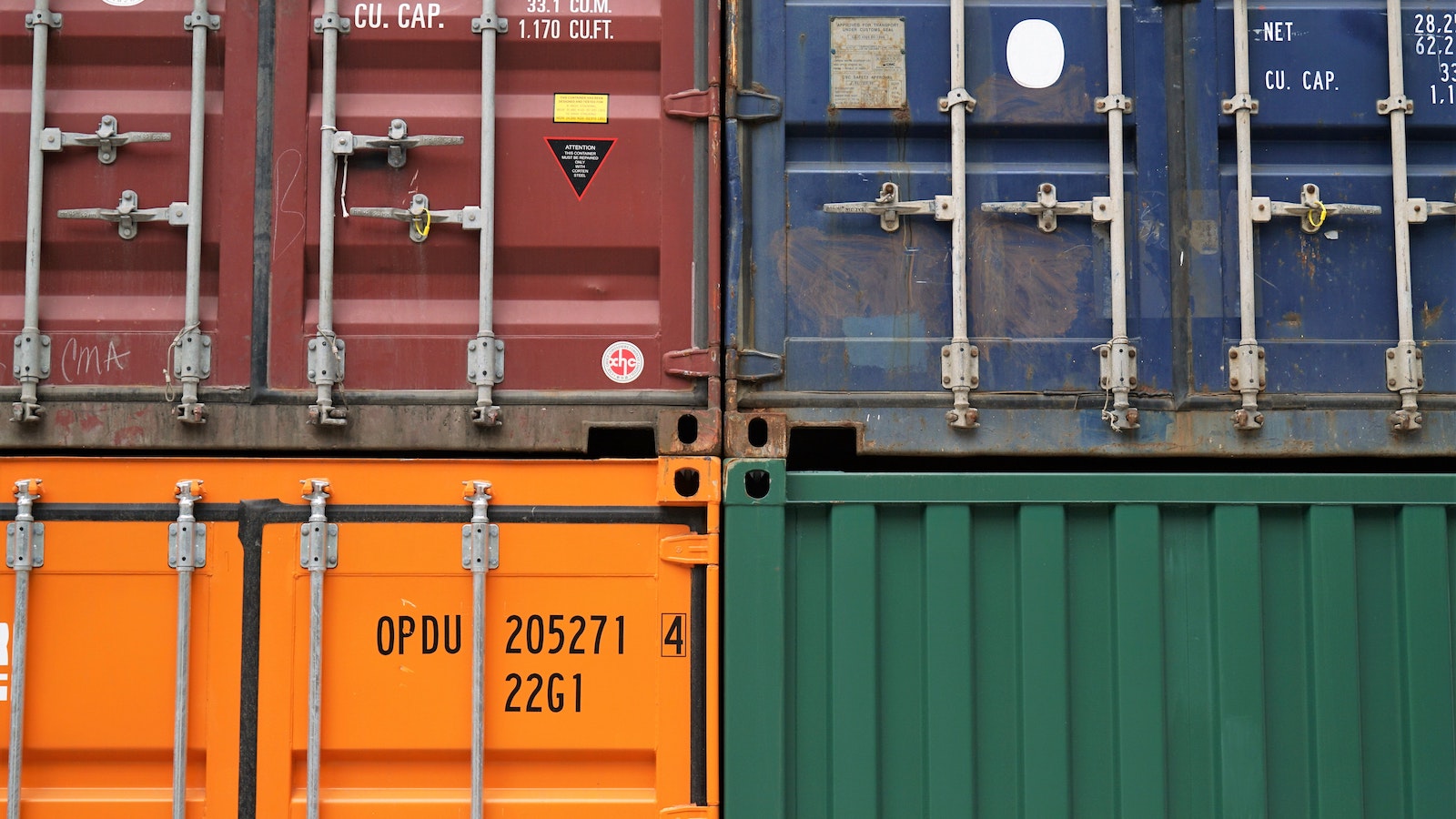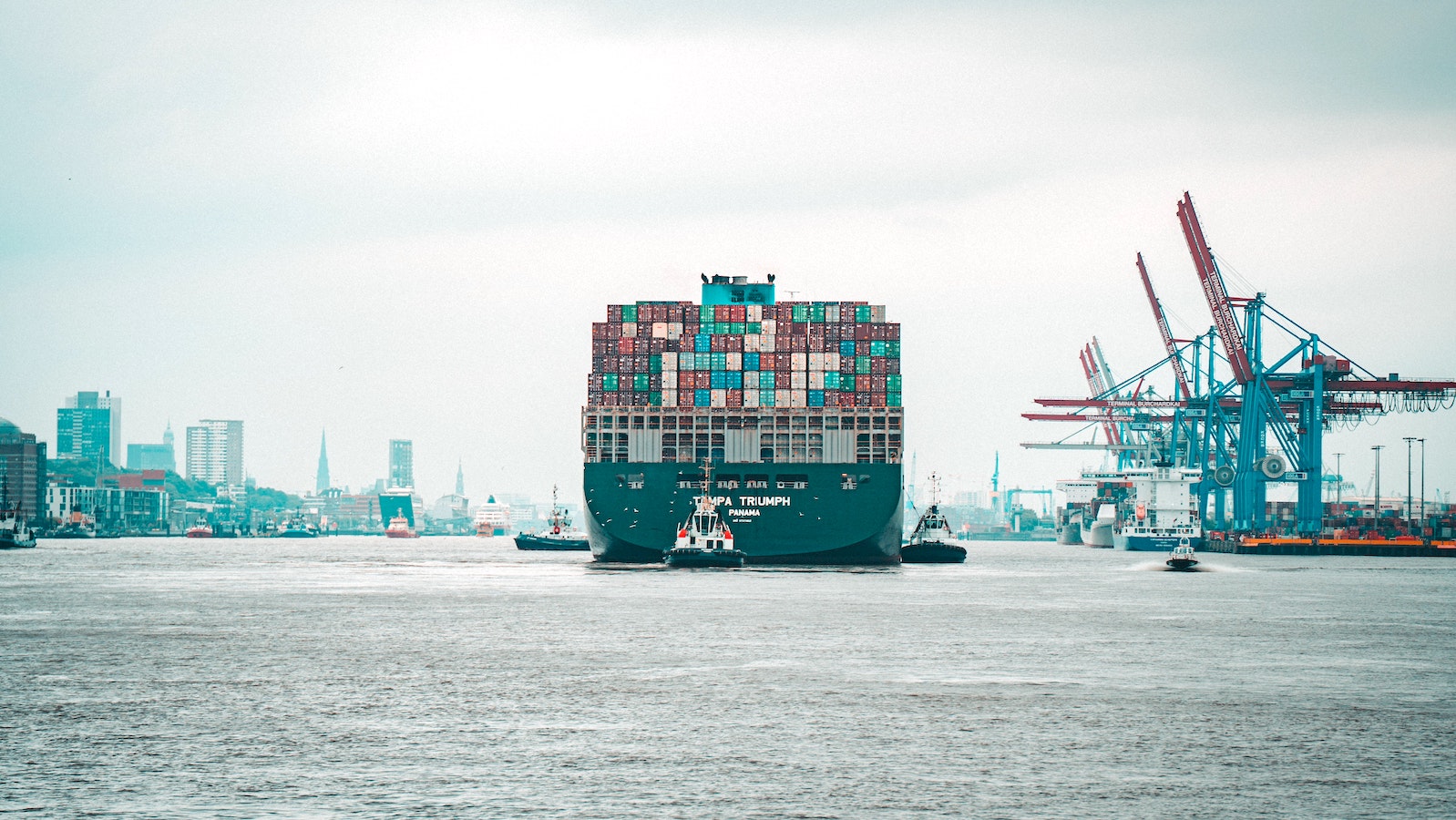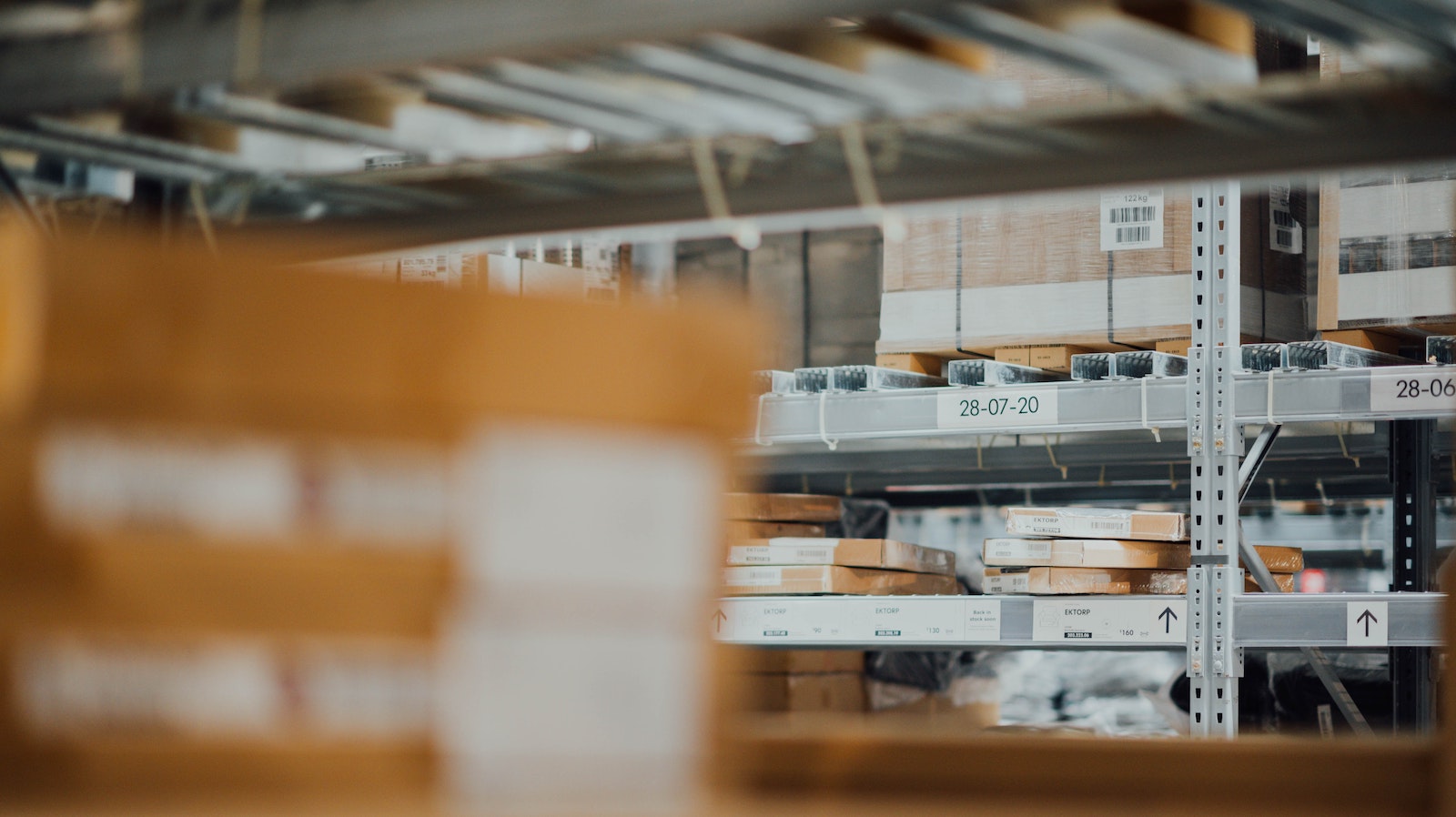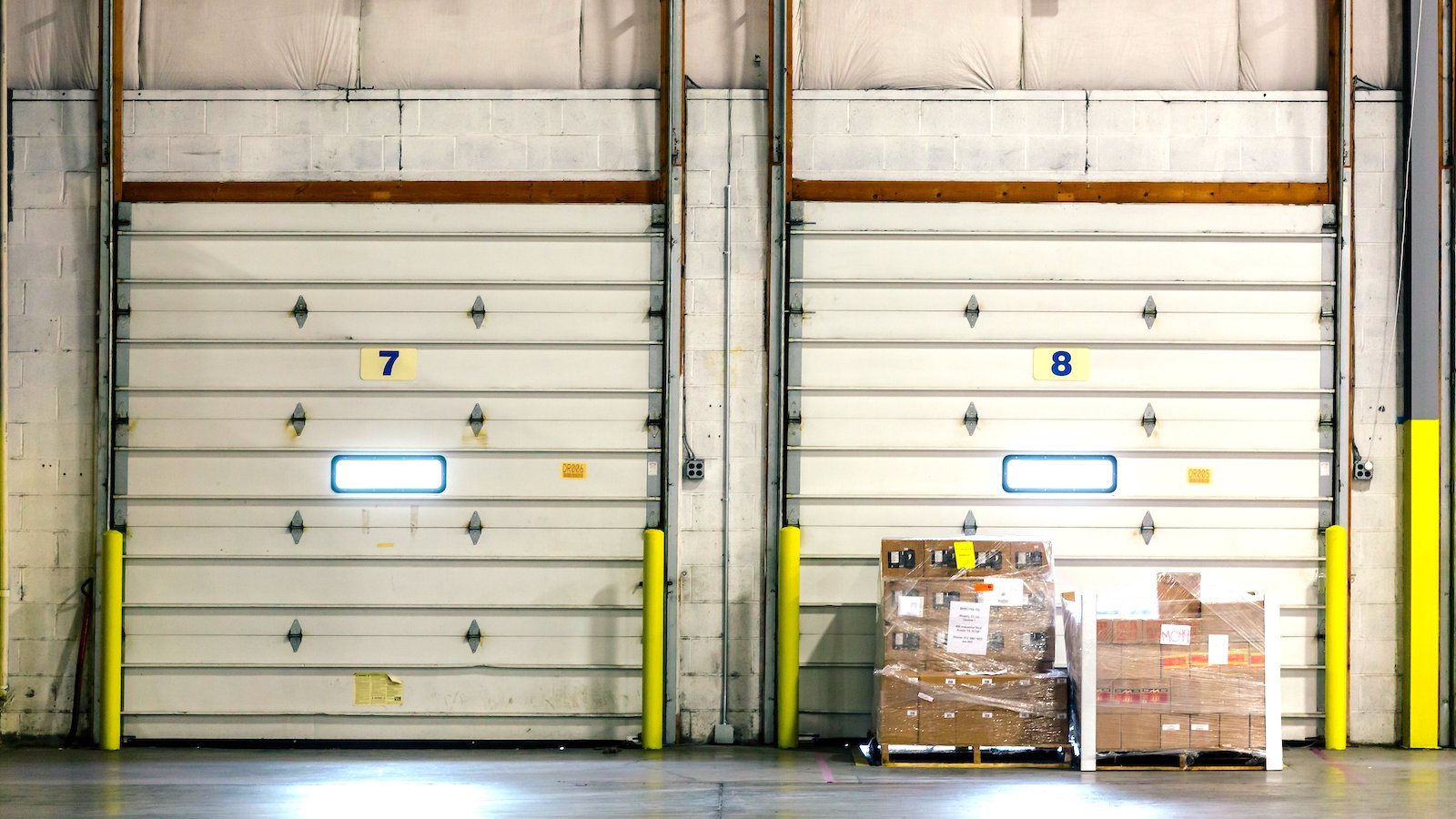Table of Contents
** Minutes
What is supply chain visibility?
How increasing SCV can help your business
Challenges of increasing supply chain visibility
Elements of the supply chain that can benefit from more visibility
What do you want to learn?
Cooking dinner. Cleaning the house. Driving to work.
These are everyday activities — but how hard would it be to do them with your eyes closed? Chances are, it would be much harder to do them well, or even to do them at all.
The same goes for supply chain management. No matter how experienced you are at running a business, it is extremely difficult (sometimes even impossible) to manage your supply chain without visibility into its operations and movements.
Whether you choose to outsource your logistics operations or keep them in-house, you need to know how products are moving throughout the supply chain if it’s going to succeed long-term.
With high supply chain visibility (or SCV), business owners can better identify and solve supply chain issues, predict future adjustments that are needed, and streamline operations for speed and efficiency.
In this article, we discuss:
- Why supply chain visibility is important
- Its benefits and challenges
- Highlight areas that improved SCV most positively impacts
- List actionable ways to improve SCV
- Demonstrate how ShipBob increases SCV for the final stages of your supply chain
What is supply chain visibility?
Supply chain visibility is the ability to see and track products as they travel through the supply chain, as well as the functions and operations that move them.
Supply chain visibility provides business owners insight into the status, location, and movement of goods at all phases of the supply chain, from production inventory sourcing to finished goods delivery. With a high degree of SCV, you know exactly how goods are moving and how operations are running throughout their entire supply chain.
How increasing SCV can help your business
Even if you feel like you have a good grasp of your supply chain operations, increasing supply chain visibility never hurts. In fact, high SCV can level up your business by benefitting key functions in the following ways.
Improves overall efficiency
When you know exactly when, where, and how products are moving through the supply chain, it is much easier to identify inefficiencies and target areas for optimisation. The quicker a business can discover bottlenecks and delays, the sooner those supply chain disruptions can be alleviated to improve supply chain efficiency.
High SCV also increases your supply chain agility and resiliency, as having eyes on vital operations enables you to make changes more proactively in the face of new trends or unexpected disasters.
Reduces costs by minimising waste
Without awareness of your supply chain’s product flow and operational capacity, it is easy to overspend, waste time, and simply never notice opportunities for optimisation.
Supply chain visibility — particularly visibility into inventory management, warehousing processes, and shipping destinations — can save a business money by highlighting areas where minor adjustments could render big savings.
With visibility into inventory levels, you can identify and offload deadstock to cut back on holding costs; similarly, with visibility into order destinations and transit times, you are able to strategically store inventory to minimise shipping costs.
Real-time data = better decisions
Up-to-date supply chain software offers users real-time data for critical functions across the supply chain. With moment-to-moment visibility, businesses are equipped to make more informed decisions.
For example, real-time inventory tracking provides businesses with the most accurate inventory counts possible, enabling them to know precisely when to replenish inventory and how much to order.
Similarly, with real-time data on shipping destinations, a business can better decide where and how to strategically distribute their inventory to meet customer demand more effectively.
“We utilise ShipBob’s Inventory API, which allows us to programmatically retrieve real-time data on how many units of each product are currently stored at ShipBob’s warehouses. We currently use this API to generate custom reports to tie this inventory data into our accounting platforms.”
Waveform Lighting Team
Challenges of increasing supply chain visibility
Supply chain visibility is extremely rewarding for your business, but can be very difficult to achieve. Here are some common challenges that hinder ecommerce businesses in their pursuit of SVC.
COVID-19 uncertainties
Supply chain disruptions make it even harder for businesses to achieve and maintain supply chain visibility — and COVID-19 has caused massive supply chain disruptions for the past two years (with cities around the world in a revolving cycle of locking down and opening back up).
- Freight container delays and port congestion lead to shortages and breakdowns in communication, jeopardizing visibility into where goods are physically at all times.
- Huge booms in ecommerce sales have overwhelmed shippers, resulting in slower last-mile deliveries and tracking issues.
- Varying national COVID regulations impact visibility into foreign supply chain stakeholders, such as manufacturers, vendors, and/or distribution partners.
- Outbreaks in factories, fulfilment centres, and other logistics hubs continue to occur, slowing down processes between shift call-offs and having other team members get tested.
Together, these delays and complications hinder visibility in even the most resilient supply chains, and will likely continue to do so in 2022.
Siloed processes
When your company is growing — especially if it’s growing rapidly — it can be difficult to maintain the level of communication that your business had as a smaller operation.
While this is natural to some extent, losing too much communication can lead various phases of your supply chain to become siloed, with each operation acting independently and forgetting to loop other supply chain phases into their operations.
Many supply chains also neglect to invest in good technology to support supply chain processes as they grow, which makes visibility even harder to achieve (and leaves them vulnerable in times of supply chain crisis).
Losing communication is very detrimental to overall supply chain visibility, as cross-functional cooperation, coordination, and information-sharing is essential to a unified, cohesive understanding of one’s supply chain.
Difficult to collect & access data across different sources
To achieve true supply chain visibility, critical data must not only be available, but must also be viewed in context. In other words, important data points from various supply chain areas need to be brought together in one place, to form a bigger, more meaningful picture of the supply chain as a whole.
The problem is that, as they grow and expand into new channels, many ecommerce businesses end up using different softwares, technologies, and tools to manage each channel. Unfortunately, none of these individual platforms provide a cohesive picture of a business’s entire supply chain.
Ultimately, this makes the process of building supply chain visibility extremely time-consuming and confusing, and makes it easy for information to accidentally get lost when switching between platforms.
Using outdated supply chain technology
Older methods and tools for managing your supply chain aren’t always conducive to good supply chain visibility.
Outdated supply chain technology doesn’t always give you access to the right metrics (such as real-time inventory counts, lead times, and average fulfilment costs), or force you to use error-prone spreadsheets to cobble together data and reports yourself — which is never a good use of time. Even if a tool provides the data you need, it will likely not be able to help you interpret, analyse, or use it.
At worst, outdated supply chain technology can actually hinder your SCV, as slow updates, technical glitches, and/or difficulty performing vital tasks actively impede your ability to keep tabs on product movement through the supply chain.
Instead, businesses should look to use newer tools and platforms that provide comprehensive data insights at the click of a button.
“We are very impressed by ShipBob’s transparency, simplicity, and intuitive dashboard. ShipBob’s front-end software was the primary decision-making factor for me in choosing them over other fulfilment solutions. Their software is so simple and intuitive, especially as so many 3PLs have either bad or no front-facing software, making it impossible to enter orders, keep track of what’s leaving or entering the warehouse. It’s fun to see orders shipping out instantaneously.”
Harley Abrams, Operations Manager of SuperSpeed Golf, LLC
Elements of the supply chain that can benefit from more visibility
Nearly every area of the supply chain can benefit from increased supply chain visibility — although some areas are more positively impacted by SCV than others.
Order tracking
As supply chain visibility increases, it becomes increasingly easy to track orders from processing to last-mile delivery — to both you and your customers’ benefit.
On the business side, end-to-end visibility of supply chain operations helps you more accurately estimate fulfilment and shipping times, and lessen the chances of an order getting lost. The right SCV software also enables you to view order status in real-time, filter orders by status, search for specific orders, and edit shipping details on the go.
For end customers, more accurate delivery time estimates set expectations up front and boost customer satisfaction when those expectations are met. In addition, good SCV software equips businesses to provide their customers with tracking numbers and periodic notifications, which reassure the buyer and build customer trust.
Inventory management
Many ecommerce companies still rely on inconsistent inventory receiving practices, manual stock counts or inventory audits, and the guessing game when it comes to stock levels.
Improving supply chain visibility forces brands to abandon these old habits, and adopt newer, easier, and more effective methods for inventory management.
For instance, to increase supply chain visibility, many businesses utilise inventory management software (IMS) that provides real-time stock counts across locations and sales channels. This level of visibility minimises miscounts, allows you to time replenishment perfectly, and prevents you from accidentally stocking out.
Inventory audits are also much easier and faster to conduct when SCV is high, as you are already aware of which SKUs and/or units are nearing expiration or obsolete, and can locate and move those out first to further save on holding costs.
Updating your inventory management processes for visibility becomes even more important as your business scales. With a high degree of SCV, you will be able to manage operations at every location in your supply chain network effectively, have a comprehensive view of your whole supply chain and inventory, and propel your business toward exponential efficiency.
“ShipBob’s analytics tool has been great to have. We can see inventory reconciliations and easily view SKU velocity, transit times, and inventory distribution recommendations.”
Pablo Gabatto, Business Operations Manager at Ample Foods
Procurement
Procurement is arguably the most financially demanding part of the supply chain — but by increasing supply chain visibility, you can actually save significant money.
SCV provides insight into where your inbound costs originate and how supply chain partners are performing, which helps keep them accountable.
If your manufacturer, supplier, or vendor cannot deliver transparency into the area of your supply chain that they cover, switching to one that can gives you the opportunity to identify areas where spend can be reduced.
Increased SCV also gives you a better estimate for production lead times, which lets you manage your inventory accordingly to avoid losing revenue on costly stockouts and backorders.
How to improve your supply chain visibility
As important as supply chain visibility is, figuring out how to improve it can be tricky — particularly if your supply chain is multichannel, has several physical hubs, and is growing quickly.
To help improve your SCV, here are some actionable tips to implement in your supply chain.
Choose the right supply chain visibility software
High-quality supply chain visibility technology enables your business to connect silos, share data, and improve efficiency almost overnight.
Rather than taking weeks to establish visibility in individual supply chain areas, larger businesses and enterprises can implement an all-in-one, out-of-the-box solution like those listed below to drive better results.
SCV Software | Features |
FourKites | An end-to-end global supply chain visibility platform for larger multichannel companies that includes:
|
SAP Integrated Business Planning | A cloud-based SCV solution to enhance key elements of supply chain planning that includes:
|
Project44 | An API-first SCV and digital infrastructure that includes:
|
Specright | A specification management solution for enabling visibility into and control of data related to goods production, from supplier to finished goods in a warehouse that includes:
|
Anvyl | An SCV solution focused on simplifying supply chain management that includes:
|
Shippeo | An SCV designed for European companies, focused on optimising and automating the transportation process that includes:
|
While these solutions may not be the best fits for smaller businesses, other tools and fulfilment platforms are specifically designed to support growing brands.
Implementing IoT across the supply chain
The internet of things (IoT) devices monitor aspects of the world around them, and can be used in various capacities across logistics to improve supply chain visibility.
When attached to a container, IoT devices equipped with GPS technology will provide live updates on their locations. With this level of location visibility, ecommerce businesses can track freight or customer shipments, or even locate a particular box in a warehouse.
Other IoTs track the speed at which they are moving at any given time, which businesses can use to monitor the speed of shipments from manufacturers and to end customers. This visibility into speed enables you to better coordinate receiving operations, and provide better delivery date estimates to customers.
Within your inventory, implementing IoTs that collect data on temperature, humidity, and light exposure can notify you when certain units or lots of inventory are nearing expiration, so that you can remove them quickly and free up valuable warehouse racking space.
Use predictive analytics
Supply chain visibility isn’t just about the present; rather, it includes visibility into the future.
Using predictive supply chain analytics and demand forecasting are a business’s best means of gaining visibility into their future supply chain. By analising common shipment destinations, your business can invest in locations closer to customer hubs to reduce shipping costs and transit times.
Implement warehouse and inventory automation
Automation improves supply chain visibility by removing much of the manual processes and labour that make maintaining supply chain visibility a hassle.
Automating inventory processes like stock counts, reorder point notifications, and replenishment help keep shelves stocked and organised with minimal confusion, while automating warehouse processes such as order processing and pick list generation keep operations flowing efficiently while improving accuracy.
Increase SCV with ShipBob
As a tech-enabled 3PL, ShipBob will handle your logistics operation with expertise — but we let you retain full visibility into inventory storage, order fulfilment, and shipping.
Using ShipBob’s proprietary dashboard, you’ll be able to access real-time inventory counts and receive automated restocking reminders so that you know exactly when to replenish.
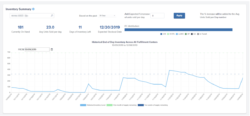
You can also access inventory analytics through the ShipBob dashboard to track historical data, forecast demand, plan your supply chain, and make the most strategic decisions for your whole supply chain.
ShipBob allows you to maintain supply chain visibility, even when fulfiling out of multiple locations. When considering distributing inventory, ShipBob’s ideal inventory distribution analytics tool predicts the best distribution ratio, and suggests which of ShipBob’s locations you should utilise.
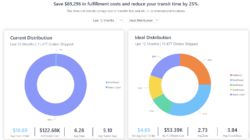
All of ShipBob’s warehouses run on the same WMS, meaning that you know precisely how inventory is stored and fulfiled, no matter which locations you store inventory in.
Each location also implements automation to streamline warehouse and fulfilment operations, with metrics on individual and overall supply chain performance accessible through a single dashboard.
By providing a high degree of supply chain visibility at all times, ShipBob enables merchants like you to run an optimised, cost-effective, and well-managed supply chain — with less stress.
Supply chain visibility FAQs
Here are answers to the most common questions about supply chain visibility.
Why is visibility important in the supply chain?
Supply chain visibility improves your operational efficiency by enabling you to identify and fix inefficiencies, it also helps reduce costs and facilitates better decision-making through real-time supply chain data.
How do you measure supply chain visibility?
Supply chain visibility is most tangibly measured by a business’s access to key metrics across the entire supply chain. The more information your track and share between silos — including data on supply chain efficiency, inventory levels, order volume, shipping times, and costs — the more comprehensive your visibility into your supply chain will be. This can be done in spreadsheets, software, or even manually.
What is supply chain visibility?
Supply chain visibility refers to a business’s ability to see when, where, and how products move throughout the supply chain, and to understand the details of the operational processes that move them.
Can software help improve supply chain visibility?
Yes! In fact, it is often difficult to achieve supply chain visibility without utilising supply chain software.
Good supply chain visibility solutions will record key metrics for various supply chain functions across fulfilment centres or channels, and present them through a single, intuitive platform. This allows you to see at a glance how inventory is moving through the supply chain at every location and in every channel, and draw more holistic insights from the bigger data picture.
